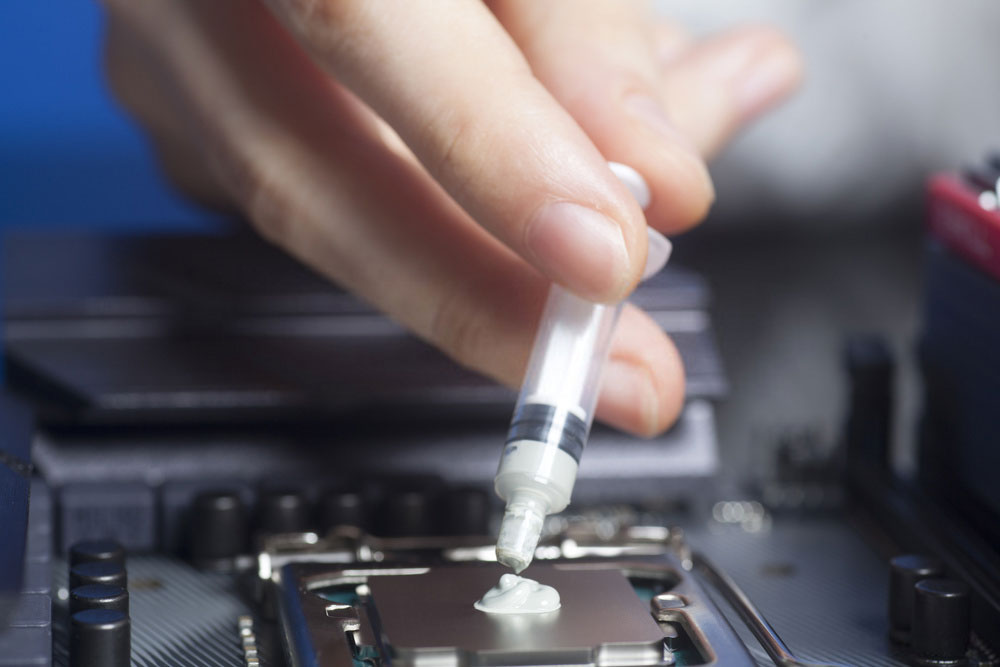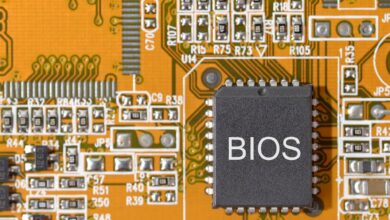How To Clean Thermal Paste Off CPU?
Thermal paste is a must in order to keep your processor cool and running at its best. If you’ve spilled thermal paste and can’t clean it off, then use this article to learn how to remove the excess paste that has gotten on your CPU. Without a thermal paste, your CPU is vulnerable to overheating and hence it would stop working properly.
The first step of removing old thermal paste is cleaning off any surface residue with an alcohol-based cleaner.
If you’re looking to remove any excess thermal paste from your CPU, make sure you have a towel or paper towel around for wiping the area down.

What Is Thermal Paste?
Thermal paste is a heat conductive material that is applied between a heat source and a heat sink. The two components work together to dissipate heat from the heat sink, which would otherwise be absorbed by air, other surfaces, or other objects in the system.
The thermal paste is applied to the perimeter of the heat sink; it then spreads out across its surface area where it can conduct heat more efficiently. The importance of thermal paste has had some debate, but some may say that it is the most important item for maintaining optimal computer performance. Though it can be quite tricky to install correctly, once applied correctly, it can increase the lifespan of a computer by up to three times.
You will need to change the thermal paste whenever you go for a new heatsink, or you want to change the thermal component of your CPU.
How To Clean Thermal Paste Off CPU
It is not very tough to remove the thermal paste from the CPU. If you are using an old CPU cooler then you need to reapply the thermal paste after removing the first one.
You should reapply the thermal paste after 3 to 5 years, but you can also remove the previous one if there is some mishap such as if you want to replace the CPU cooler or remove it, if the CPU is causing too much heat that means thermal paste is not functional as if the CPU is working for years then thermal paste get dry that increases the temperature, and if the original thermal costing is applied poorly.
You can remove the thermal paste from the mother sockets and main surface by following methods. Before moving towards the main process you will need the following supplies. Rubbing alcohol 90% or isopropyl alcohol. The ideal alcohol is 99% pure as it evaporates immediately dry Microfiber cloth avoid the paper towel as it may cause scratches on surface cotton swabs and a plastic spudger.
Steps To Clean The Thermal Paste Off CPU
- This research is Co authorized by Luigi oppido. First, switch off the window and remove the heatsink attached to the CPU carefully. First, clean the surface of the CPU with a dry microfiber cloth as much as you can without any problem, it will help to remove the chunks easily
- Now dip the cotton swab or microfiber into a small amount of rubbing alcohol to remove the remaining thermal paste that has become hardened and then use a plastic spudger to clean the stubborn paste as well. Clean the flat surface.
- Try to avoid using any conductive material over the CPU pin grid arrays as after removal of thermal paste all these things become vulnerable. Swipe the CPU from the bottom side and be gentle otherwise the cup may get damaged or a scratch will appear on it which leads to overheating transfer due to potential damage. Carefully clean the thermal paste from the heat sink, motherboard sockets, and cup pins.
- Now clean the CPU with a dry cloth and then let it dry for a maximum of one hour.
- To clean the thermal paste from the CPU pins as these are very sensitive, and it is risky to work on them, so use a soft bristle toothbrush to apply 90+ isopropyl alcohol to it. It is specifically good for pin grid array type sockets. Brush the pins in the direction of pins or in a straight line.
- Apply it gently and don’t put much stress or pressure. Now use a bit of thermal paste cleaner to remove the thermal paste from CPU pins. It is also a good idea to use the nail polish remover as it also contains alcohol that helps to soften the thermal paste.
- Clean the CPU cooler carefully and then install it again in the mother socket, and now you can apply a new thermal paste coating after drying, and it will remain stable after years of use.








